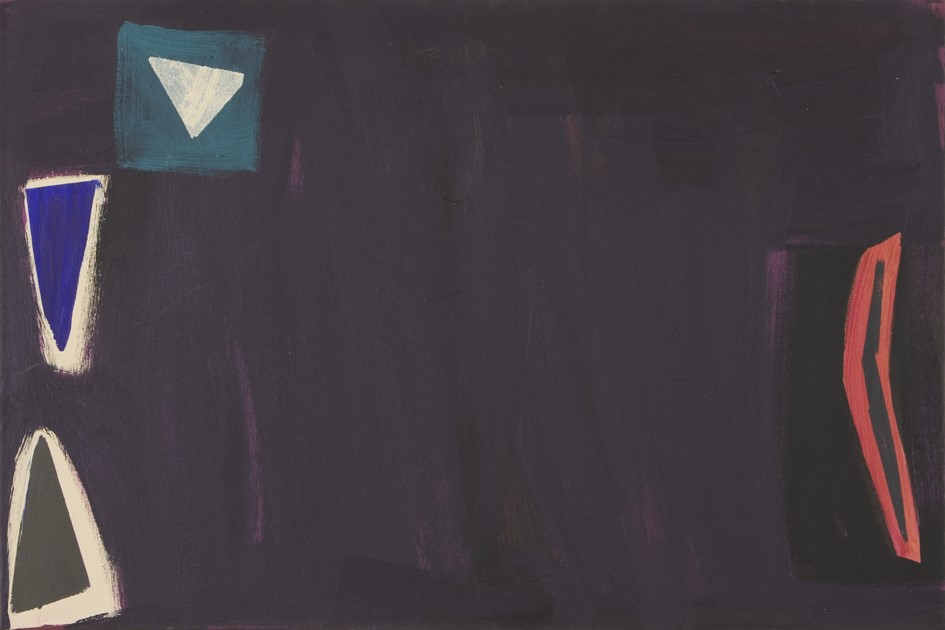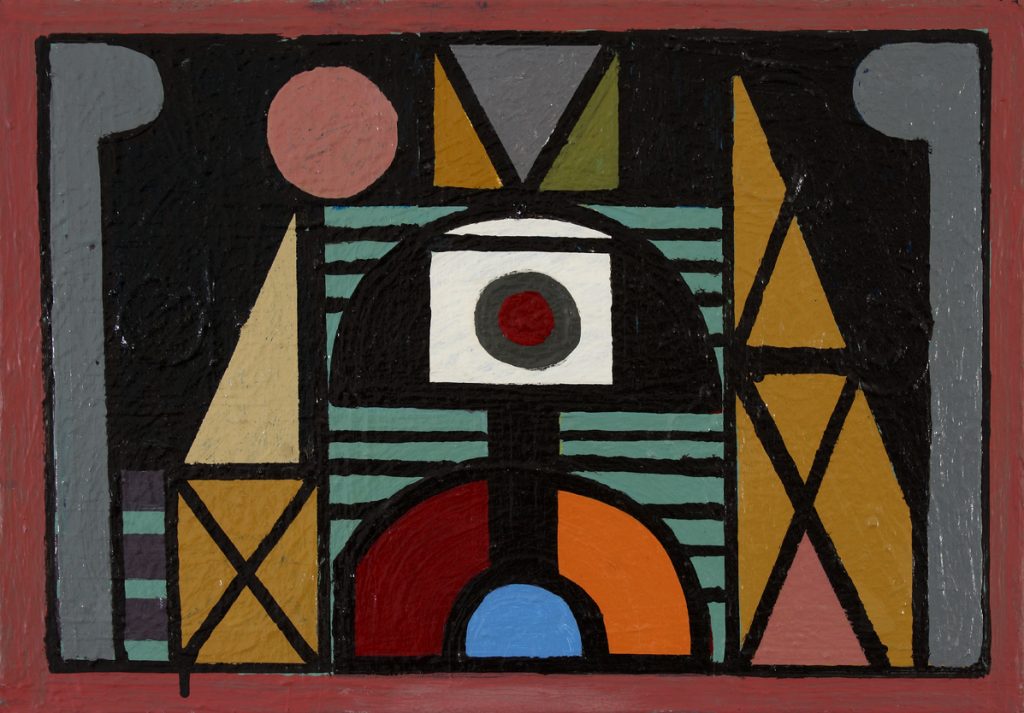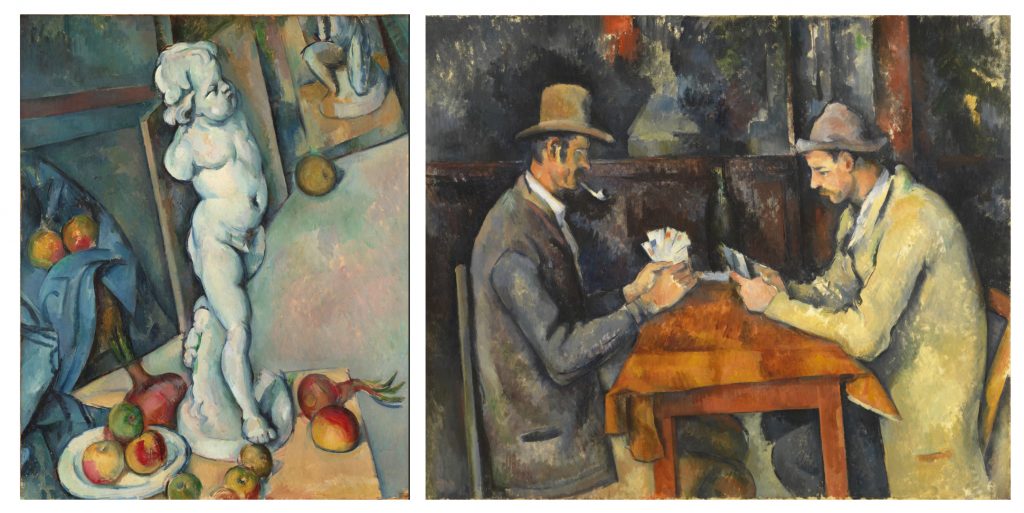John Bunker: ‘Geoff Rigden: Lyricism Laughing at itself’

Working away from American and Canadian Late Modernism, Geoff Rigden’s paintings are wrought from a deceptively simple interplay of colour and shape. There is a playfulness at work, but the form of visual pleasure to be had here is the byproduct of a complex and unpredictable set of ideas, challenges, moves and counter-moves. Both John McLean and Mali Morris have pushed, in their differing ways, to find the treasures hidden in radical simplifications of form that release the lyrical power of colour.


Rigden channels all of this, but something else as well. In Synthetic Cubism we see the world reduced to a set of signs. These severe reductions of the three-dimensional world to the two-dimensional picture plane open up endless possibilities for the continual metamorphosis of imagery; why has that man’s eye socket become a shadow of a door handle as it falls over a keyhole? Here, pictorial invention, in the form of an anthropomorphic riddle, takes its cue from the real world; but Rigden has successfully absorbed cubist syntax, without becoming a slave to it. The result is a personal visual vocabulary that can express almost anything, whether that be the austerely abstract, or a heightened kind of representation built from a unique and tautly woven sign system. Like the face in the photo of a grandparent who died before you were born, Rigden’s heraldic glyphs and medallions are somehow familiar yet unknowable.

Rigden has entwined disparate art-historical threads to create a unique and highly personal art that is at the same time radically impersonal. His hypnotic paintings, sculptures and constructions are fascinating and mysterious machines carrying out meticulously organised raids on good taste. Sometimes toy-like and absurd, sometimes Cycladic, totemic and allusive, Rigden’s art is always finding new ways to talk to the part of us that is hard-wired for new adventures in the visual realm, both ancient and modern. No previous experience required; no ‘aboutery’1‘Aboutery’ was coined by critic David Sweet; roughly speaking, it denotes the attempt to import meaning into the work of art through linking it to a subject outside of itself. or theoretical patter necessary; though sensitivity to the elemental strangeness of human perception preferable, if not essential.

His works are, at once, psychologically dense and materially forthright- both intense and intensely present. They operate by their own enigmatic visual rules, but still manage to define themselves with absolute sureness against the scintillating vagaries of everyday visual perception; much like the Courtauld’s two Cezannes: ‘Still Life With Plaster Cupid’ and ‘The Card Players’.


Rigden’s objects and images are happy to dance expressively to simple rhythms; yet remain rigorously and gloriously aloof as they do so. This sense of exquisite distillation and refinement running counter to a mischievous humour, all of it anchored to the base materiality of the everyday world, reveals a restless sensibility. What sets Rigden apart from his peers is a hard-won lyricism, perfectly prepared to laugh at itself. His underrated visual intelligence has yet to be given the time and praise it deserves.

Howard Hodgkin, ‘In a Hotel Garden’ (1974), oil on wood, 107 x 127cm
Geoff Rigden ‘Cycladic Violet’ (1990), acrylic on canvas, 163 x 144cm
Geoff Rigden ‘Omega’ (2010-12), acrylic on wood, found objects, 60 x 29 x 16cm
Geoff Rigden, ‘Heron’ (1995), oil on wood, h 60cm
One thought on “John Bunker: ‘Geoff Rigden: Lyricism Laughing at itself’”
Comments are closed.
A beautiful, perceptive analysis of a beautiful and perceptive artist.
I have enjoyed the modesty of the writing of this piece and the modesty of Geoff’s wonderful abstract paintings.
And some of us may not want to paint in Geoff’s way; but I, for one, cannot help but love them.
An example on both counts to us all.